Blog
How to Create Engaging Virtual Events
This guide was designed to aid brands and teams of all sizes in creating virtual and hybrid experiences that engage your audience and guarantee ROI. If you want to capture your attendees and keep your online audience engaged so that they can really see lasting impact, this guide is for you. If you want to move on from providing ordinary online experiences that only contribute to screen fatigue and information overload, we hear you. We’re with you. Read on.
There are many amazing resources to walk you through the process of transitioning to virtual and hybrid events. The approach this guide takes is less focused on every to-do or how-to, and specifically focused on the strategy and the creative components that often get overlooked or forgotten after being moved to the bottom of the priorities list.
This tool was created as an interactive PDF so that you can conveniently fill in answers and check off boxes as you go. Simply duplicate or ‘save as’, and reuse for success with every virtual and hybrid event that you execute.
Let’s get started.
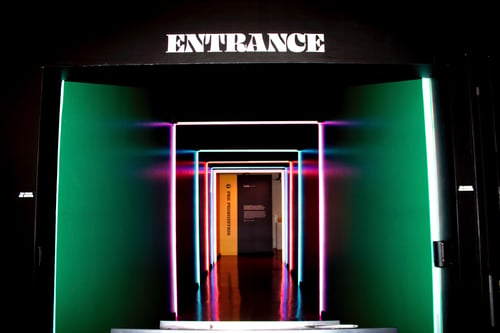
Identify your audience.
Identify who your audience is, then seek to understand them and what they need. This is the foundation for every step that follows and therefore, the most crucial step. Through research and data collection, answer the following questions about your audience. When possible, analyze your audience even deeper or hire a third party who specializes in persona development, behavioral science, or consumer behavior. To get you started, answer these questions in as much detail as possible, remembering to incorporate a blend of supporting qualitative and quantitative data.
- Who is my audience?
- What are my audience’s interests and goals?
- Where does my audience spend most of their time?
- When is my audience most engaged with my brand?
- Why do (or would) they attend this event, and what do they need to get out of it?
- What style of communication most resonates with my audience?
Set clear goals & objectives.
Now that you understand who you need to reach, let’s get clear on what the goal of the experience is. To start, answer these questions as specifically as possible. Make sure your goals are SMART (specific, measurable, attainable, realistic, and timely).
- What do I need to achieve out of this experience?
- How many people do I plan to reach?
- What is my goal participant engagement metric?
- What is my revenue goal (if applicable)?
Now, fill in the blanks here to write a clear objectives statement to refer back to:
(Name of your experience) will (verb) (goal # of attendees) (target audience) for the purpose of (purpose and # goal) in (revenue, leads, shares, etc.)
Example Objective Statements:
ABC’s Annual Sales Conference will educate and equip 250 sales representatives from the southeast division for the purpose of increasing employee retention by 1.3% and next year’s sales revenue by 2%.
Fearless Frenzy’s quarterly brand ambassador event will celebrate and highlight our top 70 millennial female influencers in greater NYC, engaging a larger digital audience of 200,000 females for the purpose of generating 500 new brand ambassadorship applications.
Define the best format.
Based on your custom audience report and your objectives, define the best format for the experience. Regardless of whether you’re planning a conference, training session, entertainment experience, or recruiting event you’ll need to identify the best virtual format. Here are some options you may choose from:
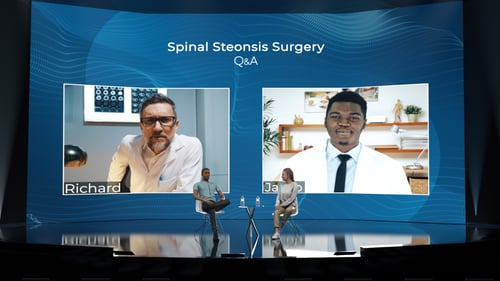 Virtual Event
Virtual Event
Going 100% virtual may be the best format if (1) you want to reach a broad audience (2) many of your audience members are unable to travel with ease or (3) regulations are in place prohibiting large in person gatherings.
Within the virtual event format, here are a number of additional considerations:
-
Where quality is a priority and live interaction such as real-time Q&A with a speaker is not needed, fully pre-recording your content will best serve your audience.
-
Where presentations need to be perfected, but live interaction is still a priority, partially pre-recording content and having live aspects, such as a live host, will best serve your audience.
-
Where authenticity is needed to best engage audience members, time frame is tight, and presentations do not have to be perfected, fully live streaming will best serve your audience.
Partially in person, with a virtual component. Consider the same options listed under the virtual format. Whenever possible, we recommend choosing a hybrid format which can seem like a double the work since you are planning an in person (likely) micro event with virtual streaming option.
Some benefits of hybrid events include:
- higher participant engagement
- more sponsorship opportunities
- increased speaker comfortability and satisfaction
- larger audience size
- global audience reach
- less venue space needed
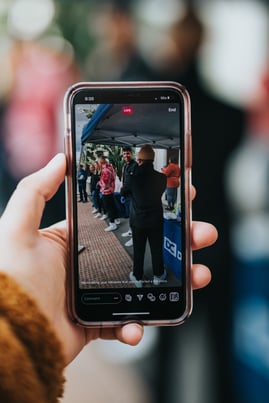 Branded Digital Content
Branded Digital Content
If your audience spends a lot of time on social media, you want your content to be available to the public live, and you don’t intend to monetize participation you may consider a series of branded social content and live conversations on social media as opposed to a private web or app based format for your digital experience. This option is also advantageous when your long form content does not need to be consumed at a specific moment in time, and networking is not a priority.
Select a platform.
Selecting a platform for your virtual event can be intimidating, but with the right tools and support you will be off to the races. The right product depends on your needs and goals, so while there is not necessarily a one-size-fits-all-solution we recommend, we can share some helpful resources and tips to help you find the best platform for your virtual event. If you do not have a technical team or consultant to rely on, there are several reports and blogs available that compare the majority of live streaming and virtual event platforms.
Once you narrow down to your top 3, request demos for those, then make your selection. To date, the most comprehensive product comparison is found in the Virtual Event Tech Guide published by Event Manager Blog. Another great resource is BizBash’s Platform Comparison. Before you dive deep into product comparison, make sure you have confidently answered these additional questions that will inform your platform selection process.
- Do I need a desktop based or mobile based experience?
- Do I need a browser based or app based experience?
- Do I want content to be accessible only to registrants or to the public?
- Do I want content to be available on demand? Hint: If your audience is global, the answer is yes.
- Do I want have tiers to attendance?
- Do I need sponsorship features? If so, what features are non-negotiables?
- Do I need to integrate the platform with any other tools? If so, what tools?
- What are my privacy and security concerns?
- How much real time interaction, and in what forms, does my audience need? (i.e. Live Polling, Chat, Live Q&A, Gamification, Social Walls)
Book a venue.
Unless your event will be fully live streamed from presenters’ remotely, you will need to book a venue or sound stage where your virtual event will be executed. Remember to respectfully negotiate pricing with the venue rather than accepting the first quote as the final offer.

In selecting the right venue, make sure to consider these elements in addition to any other priorities you have:
- Reliable, high speed internet
- Lighting, no windows preferred
- Soundproofing & rigging need
- Space dimensions, including space for your video master control center
Craft story & content.
Plan relevant content for your audience that answers their questions. Then, design capturing and quality visuals to support your content. Research shows that 62% of consumers will develop a negative perception of your brand if you publish a poor quality video. For a fully virtual event, your event is now more content dependent than ever. Content is the main event, but no one will stick around to see the main event if the delivery is not engaging. (More on this later) Beyond relevance, help listeners stay engaged, by either presenting them with entirely new information that answers a question they didn’t know they had in a well-planned and communicated way or present them with a familiar topic they care about from a very unique perspective with a surprising delivery.
Now more than ever many consumers say that they expect content to be “Netflix level.” With more and more content being produced at a high level, consumers’ expectations are higher than ever before. While authentic, iPhone shot content can be effective for some purposes and some audiences, consumers are more likely to engage for the full duration with a higher quality experience. Think of your virtual event’s content more like a movie. If you want to engage viewers for the length of a movie, or even longer as many events dare, you need to “hook” attendees with a story and elements of surprise as a great movie does.
Set aside some time to think deeply and answer the following questions.
- What do I want participants to take away?
- What questions does my audience have that I need to answer?
- What is the storyline we will tell to engage viewers in answering their questions?
- Who is the hero? Who is the villain? Who is the guide?
- What is the obstacle or problem? What is the outcome?
Then, write a content purpose statement to drive your strategy and to align all of your speakers, MC’s, and creative team towards the same clear mission:
This content experience will help people (actionary goal/goals) by providing (adjective) and (adjective) content that makes (audience description) feel (emotion) or (emotion) so that they can (task) or (task).
Staff your virtual event.
Your virtual event is usually only as successful as the team of people behind it are dedicated and experienced. Never underestimate the power of a talented and engaging host. Most audiences still expect entertainment in the online format, as they would in person. Prepare not to meet their expectations, but to surprise them with unique entertainment. In some cases, staffing looks similar to planning an in person event. Here’s a list you may refer to make sure you have all your bases covered.
- Live Producer & Production Staff
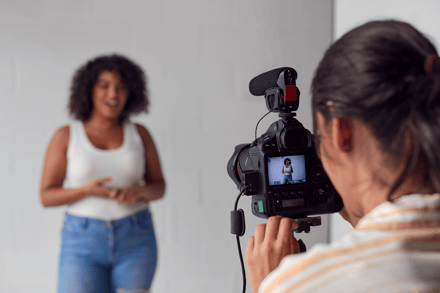
- Virtual Event Manager
- Attendee Support
- Host/MC
- Moderator/Co-Host
- Talent & Entertainment
- Creative & Design
- Marketing & Registration
- Virtual Presentation Coach
- Sponsorship Sales
- Catering (for onsite team or in-person audience, if hybrid)
Incorporate interactive elements.
Finally, the make-or-break engagement factor. (Also, the fun part!) Always plan unto engagement. Every detail should be aimed at better engaging your audience. Incorporating interactive elements is a powerful way to engage your audience. Consider these pillars of engagement when planning your interactive elements.
Surprise.
The unexpected always sparks curiosity and engagement. Surprise attendees with an unexpected element mid-way through the event to grab attention again! Throw in an object to their Virtual Meeting swag bags and tie it in with one of the presentations.
Competition.
The human brain is wired for rewards. A well-executed competition through gamification is a win for attendees, and for you.
Social Responsibility.
Humans are also wired for human connection and empathy. Partner with a non profit or social enterprise so that when audience members participate at a certain level, it contributes to a cause.
Limit Distractions.
Take a lesson from the customer service industry: people will not notice when everything goes right, but they will notice when one small thing goes wrong. Apply this framework to your preparation and create a seamless experience for viewers.
Hands on Interaction.
Seek to get viewers engaged with a physical element in their home in a way that relates back to your content. Physical movement triggers the brain to wake up. With so much screen time, viewers become fatigued without a prompt to remove their eyes from their screen and engage with their senses with the real world. This could be tied in with your magician entertainment, or a commercial break, or during a presentation, but it should always connect back to your content to keep them engaged with your event.
Passion.
We are all inspired by passion. Choose presenters that are passionate about the topic to inspire attendees.
Go create what matters.
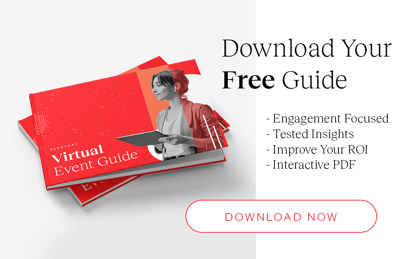 That's a wrap! We hope you feel inspired and equipped to go create experiences that leave a lasting impact. That's exactly what we at Redstory think about every day. We are here to support you and your team. If you found this blog to be helpful, download the Virtual Event Guide ebook, which includes an interactive checklist!
That's a wrap! We hope you feel inspired and equipped to go create experiences that leave a lasting impact. That's exactly what we at Redstory think about every day. We are here to support you and your team. If you found this blog to be helpful, download the Virtual Event Guide ebook, which includes an interactive checklist!
For access to our evergreen library of resources on hybrid, virtual, and in person event design, subscribe to our blog below!
